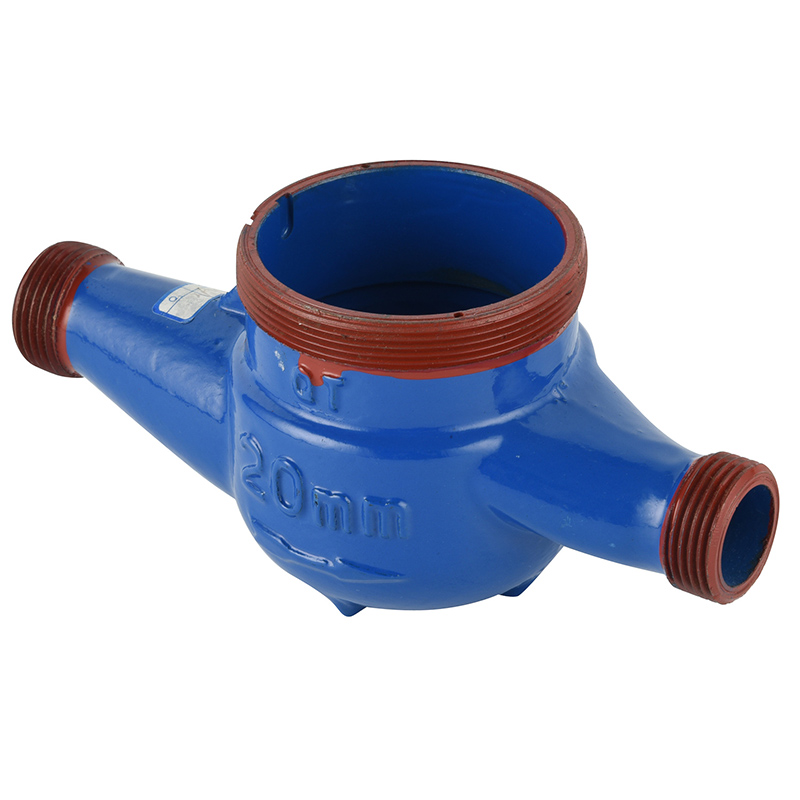Description and Components of Water Meter Body Without Valve
2024-07-13
A water meter body without a valve refers to the main housing or casing of a water meter that does not include an integrated shut-off valve. Here’s a detailed overview of what it entails:
Description and Components:
1. Water Meter Body:
- Material: Typically made from durable materials such as brass, bronze, or plastic (polymer) depending on the application and environmental conditions.
- Structure: Designed to house the internal components of the water meter, including the measuring mechanism and connections for inlet and outlet pipes.
- Inlet and Outlet: Features threaded or flanged connections for attaching inlet and outlet pipes to facilitate the flow of water through the meter.
2. Without Valve:
- Purpose: Unlike water meter bodies with integrated valves (often called valve-in-head designs), a body without a valve does not include a built-in shut-off valve.
- Usage: Requires a separate external valve installed upstream (on the inlet side) for controlling the flow of water to the meter and downstream (on the outlet side) for maintenance purposes or emergencies.
Functionality and Applications:
- Measurement: Facilitates accurate measurement of water consumption based on flow through the meter.
- Installation: Typically installed in residential, commercial, or industrial settings where precise measurement of water usage is required for billing, monitoring, or conservation purposes.
- Compatibility: Designed to be compatible with various types of water metering mechanisms (e.g., positive displacement, turbine, electromagnetic) depending on the meter's intended application and accuracy requirements.
Considerations:
- Valve Requirement: When selecting a water meter body without a valve, ensure proper installation includes the necessary valves (such as ball valves or gate valves) upstream and downstream of the meter for operational control and maintenance.
- Material and Durability: Choose a material suitable for the specific environment (indoor or outdoor, corrosive conditions) to ensure longevity and reliability of the water meter body.
Installation and Maintenance:
- Professional Installation: Recommended for proper alignment, sealing, and connection to the water supply system.
- Maintenance: Regular inspection and calibration of the water meter, as well as maintenance of associated valves, ensure accurate measurement and functionality over time.
Regulatory Compliance:
- Standards: Ensure the water meter and its components comply with local regulations, standards, and metrological requirements for accuracy and performance.
A water meter body without a valve provides a critical component for measuring water usage accurately in various settings, requiring appropriate installation and maintenance practices to ensure reliable operation.



